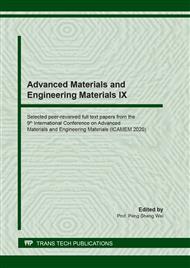p.57
p.65
p.71
p.77
p.83
p.89
p.95
p.101
p.107
High-Temperature Oxidation Behaviors of 30Cr25Ni20Si Heat-Resistant Steel in Air
Abstract:
High temperature oxidation dynamic behaviors and mechanisms for 30Cr25Ni20Si heat-resistant steel were investigated at 800, 900 and 1000°C. The oxide layers were characterized by scanning electron microscopy (SEM-EDS), X-ray diffractometer (XRD). The results showed that the oxidation rate of test alloys is increased with increasing the oxidation time. The oxidation dynamic curves at 800 and 900°C follow from liner to parabolic oxidation law. The transition point is 10 h. At 1000°C, the steel exhibits a catastrophic oxidation, and the oxidation mass gain value at 50 h is 0.77 mg/cm2. This suggests that the steel at 900°C has formed a dense protective surface oxidation film, effectively preventing the diffusion of the oxygen atoms and other corrosive gas into the alloy. Therefore, at the first stage of oxidation, chemical adsorption and reaction determine the oxide film composition and formation process. At the oxide film growth stage, oxidation is controlled by migration of ions or electrons across the oxide film. When the spinel scale forms, it acts as a compact barrier for O element and improving the oxidation resistance.
Info:
Periodical:
Pages:
83-88
Citation:
Online since:
September 2020
Authors:
Price:
Сopyright:
© 2020 Trans Tech Publications Ltd. All Rights Reserved
Share:
Citation:


